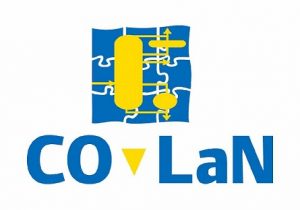
The CAPE-OPEN 2021 Annual Meeting took place on October 27-28 as a virtual conference with around 40-50 participants on line at any time. Too soon to tell how the participants appreciated the meeting, the evaluation has just been launched. Presentations and their recordings are progressively made available on our communication channels, with November 15 as the target for making all available.
- Olaf BERGLIHN from SINTEF presented on their plans with CAPE-OPEN and especially with COBIA-based CAPE-OPEN that meets their requirements for cross-platform implementation.
- Jasper van BATEN from AmsterCHEM described the Python CAPE-OPEN Unit Operation he released earlier this year. Jasper explained why he decided to develop such a Unit Operation following the assessment made at the CAPE-OPEN 2020 Annual Meeting of the appeal of Python for many participants.
- Martin GAINVILLE from IFP Energies Nouvelles (IFPEN) shared his experience with the above described Python CAPE-OPEN Unit Operation and also with another application from AmsterCHEM, the Python Thermo Import.
- Andrea GALEAZZI from Politecnico di Milano described next the opportunity that CAPE-OPEN gives them to develop and to make available a Unit Operation model of a catalytic plate-fin heat exchanger used in hydrogen liquefaction processes while such processes will be in high demand in the future to meet the challenge of developing hydrogen as an energy vector.
- Vidushi CHITRANSHI from University of Cape Town described next the challenge of transforming the model of a plate type reactor for a Fischer Tropsch process from a 2D representation in ANSYS to a 1D representation as a Unit Operation in COFE, so that the entire process can be modelled within a process simulator like COFE.
- Another intensive use of COFE was then described by Robbie VENDERBOSCH from the Biomass Technology Group (BTG). Robbie mentioned how flowsheeting helped convinced clients and partners of the feasibility of the new processes BTG develops around the thermal cracking of organic materials.
- Next Malcolm WOODMAN, contracted by CO-LaN to lead the development of the CAPE-OPEN certification process by CO-LaN, explained the process as it is now designed and the funding model to be applied.
- As a follow-up Malcolm described the design of the Test Suite which will be the backbone of the certification process and offered a live demo of the 1st prototype of the Test Suite.
- David CAMERON from University of Oslo talked on their objectives with using CAPE-OPEN.
- Richard BAUR from Shell gave the activity report of CO-LaN over the period since the previous CAPE-OPEN Annual Meeting in October 2020 and till now. Next Richard delivered the financial report for year 2020 and explained the budget for 2022. The election of the new Management Board also took place as part of the CO-LAN Annual General Meeting.
- Detailed reports on the activities of two Special Interest Groups (SIGs) followed, first from the Interoperability SIG, given by Malcolm WOODMAN and next from the Methods & Tools SIG by Bill BARRETT from US EPA. This second report covered part of the COBIA development project that the Methods &Tools SIG is supervising.
- A detailed report on the status of COBIA Phase III was given by Jasper van BATEN who is contracted by CO-LaN to perform the development. Jasper showed how COBIA-based marshalling lets interoperate COBIA-based applications of different bitnesses or sitting on different platforms.
- Next Leonid KORELSTEIN (Piping Systems Research and Engineering Company) described their research on powerful interpolation techniques to lower the need for repeated calls to a thermodynamic server, allowing for more use of 3rd party thermodynamic servers through CAPE-OPEN interfaces.
- Frank ECKERT from 3DS (Dassault Systèmes) described how CAPE-OPEN fits in their development plans from physical property estimation to process simulation.
- Dylan WEBER from Georgia Tech explained how he made use of a MATLAB CAPE-OPEN Unit Operation to implement a novel simulation method for complex solvent mixture transport through polymer membranes and to plug it into a process simulator.
- Finally Roda BOUNACEUR from LRGP, a French research laboratory, reported on a new CAPE-OPEN Unit Operation they developed and he demonstrated live how this Unit Operation can be easily plugged in and used in process simulators such as ProSimPlus, Aspen HYSYS and Aspen Plus while proving how efficient the model embedded is.
On October 22, CO-LaN has released a new maintenance version of COBIA 1.2. This 8th maintenance release resolves many minor issues detected mostly during Phase III developments. It shows the commitment of CO-LaN to maintain COBIA 1.2. You are all welcome to download the COBIA Software Development Kit and to make use of it for the development of your COBIA-based applications.
Feel free to point to this Post within your organization.
